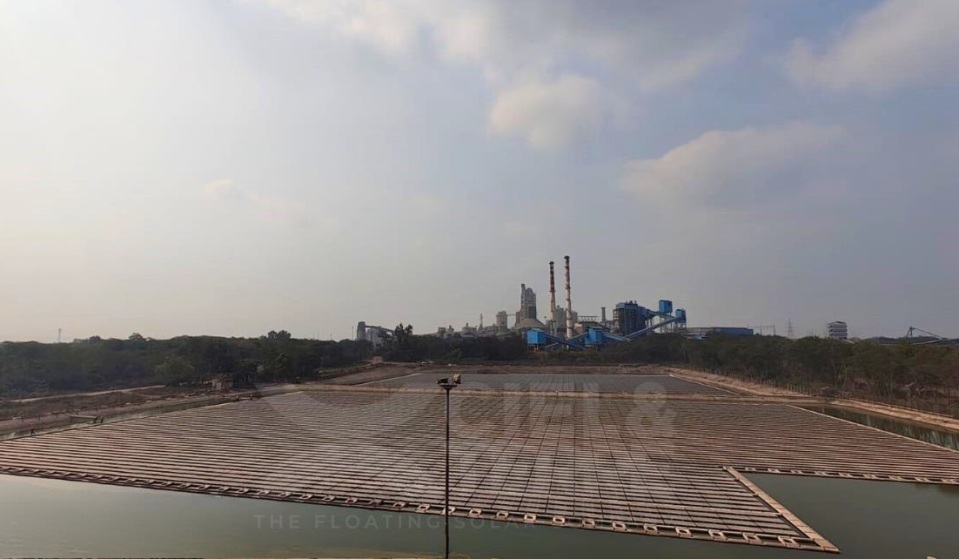Ciel & Terre India, in February 2024, completed a 4.096-MWp floating solar installation for Amplus KN One Power Pvt Ltd. The project was located atop a water reservoir in the plant area of Ultratech Cement Ltd at Awarpur, in Korpana taluka, Chandrapur district, Maharashtra. This case study explores the details of the project, its unique configuration, and the challenges faced during its implementation.
Innovative Design and Configuration
The Amplus KN One Power project, boasts a capacity of 4.096 MWp and nearly 10,856 Air Optim Hydrelio floats, equipped with Jinko 550 Wp PV panels arranged in 4-in-a-row configuration. Utilizing non-polluted water from the nearby Wahegaon River, the panels are tilted at 5 degrees. The project consists of two islands with capacities of 1.909 MWp in Reservoir 1 and 2.187 MWp in Reservoir 2, anchored using Bank Helical Anchoring. Covering 6.3 acres of a 10.8-acre water area, it achieves approximately 60 per cent coverage. Designed for captive consumption, this floating solar installation sets a benchmark in renewable energy innovation.
Overcoming Challenges
Implementing a floating solar power plant comes with its unique set of challenges. The Amplus KN One Power project faced several obstacles, each of which required innovative solutions:
- Proximity of Barricading: The proximity of barricading to the reservoir left minimal space for anchor positioning. This required precise planning and the use of advanced anchoring techniques to ensure stability.
- Reservoir Fencing and Pipes: Many pipes were located near the reservoir fencing, complicating the anchoring process. The project team had to devise specialized methods to secure the anchors without interfering with the existing infrastructure.
- Rocky Terrain in Reservoir 2: A significant rock was present in the anchoring area of Reservoir 2. The team employed advanced drilling and anchoring techniques to secure the floats in this challenging environment.
- Hard and Non-Penetrable Surfaces: The use of chemical anchors was necessary due to the hard and non-penetrable surface. This required the use of specialized equipment and materials to ensure a secure and durable anchoring system.
- Hard Soil Conditions: In some areas, RCC (Reinforced Cement Concrete) piles had to be used to provide a stable foundation for the floats due to the hard soil conditions.
Environmental and Economic Impact
The Amplus KN One Power project exemplifies how innovative technology can be leveraged to create sustainable energy solutions. By using floating solar technology, the project minimizes land use and reduces environmental impact. The non-polluted water source and efficient design contribute to the overall sustainability of the project. This project helps in reducing emissions amount to 5,571.6 tonnes of CO2 equivalent per year.
Additionally, the power generated is used for captive consumption, providing a reliable and green energy. This not only reduces dependence on non-renewable energy sources but also contributes to the region’s energy security and environmental goals.
Conclusion
The Amplus KN One Power project is a pioneering venture in the realm of floating solar technology by Ciel & Terre India. By overcoming significant challenges and employing innovative solutions, it sets a benchmark for future projects in the renewable energy sector. This project underscores the importance of adaptive engineering and sustainable practices in achieving a cleaner and more efficient energy future.
Also read: Ciel & Terre India completes floating solar project for Tata Steel
Featured photograph (source: Ciel & Terre) shows the 4.096-MWp floating solar installation discussed in this case study.

